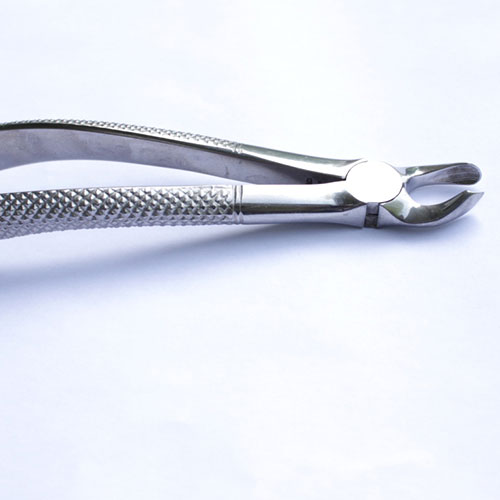WHEN IS IT NEEDED
Removal of the tooth when severely damaged
Let the extraction be our final choice…
And don’t forget, the earlier a tooth damage is diagnosed, the more likely it is to be treated conservatively.

When the damage of the tooth is of a great extent and it cannot be restored with any other conservative methods, the tooth is extracted. Chronic periapical inflammations, decay that extended deep into the gums or the root of the tooth, combined periodontal and endodontic inflammation, meaning that the gum and the pulp of the tooth are both infected, are some of the reasons that lead to the extraction.
Other cases of teeth that need to be extracted are wisdom teeth, teeth with severe symptoms such as pain, teeth with tissue loss that is detected through an x-ray, a posterior tooth with a big amalgam filling that has been damaged all the way through the root or when an anterior tooth has been fractured and there has been a complication in its root. Also, in some cases of orthodontic treatment, it is required to extract a tooth or teeth in order create the right space for the remaining teeth to be aligned. Finally, extraction takes place in cases of supernumerary or impacted teeth, in cases of primary teeth that have remained longer in the dental barrier, and last but not least, for aesthetic reasons.
Local anesthesia is required, making the extraction completely painless. Stiches are used when a surgical extraction occurs to help the healing process and prevent an infection of the area. Medication is given postoperatively, depending on the extent of the operation, as well as specific guidelines in order to avoid swelling.
The gap that is left after the extraction, can easily be replaced after the healing process, primarily, for functional reason (chewing, speech, support of the dentoalveolar system, preservation of the vertical dimension), but for aesthetic reasons too.
Delaying or postponing the restoration treatment, causes the remaining teeth to gradually move in the space that has been created. As a result, there is loss of balance between the dental contacts and plaque is accumulated due to the tooth inclination or rotation, resulting in periodontal disease and teeth decay.
The gap can be either restored with a metal-ceramic bridge or a tooth build-up with glass fibers which is a value-for-money choice. Other choices are a tooth implant that has the greater prognosis and lifespan or a removable denture when the gap is large and there are no adjacent teeth to support a fixed restoration.


